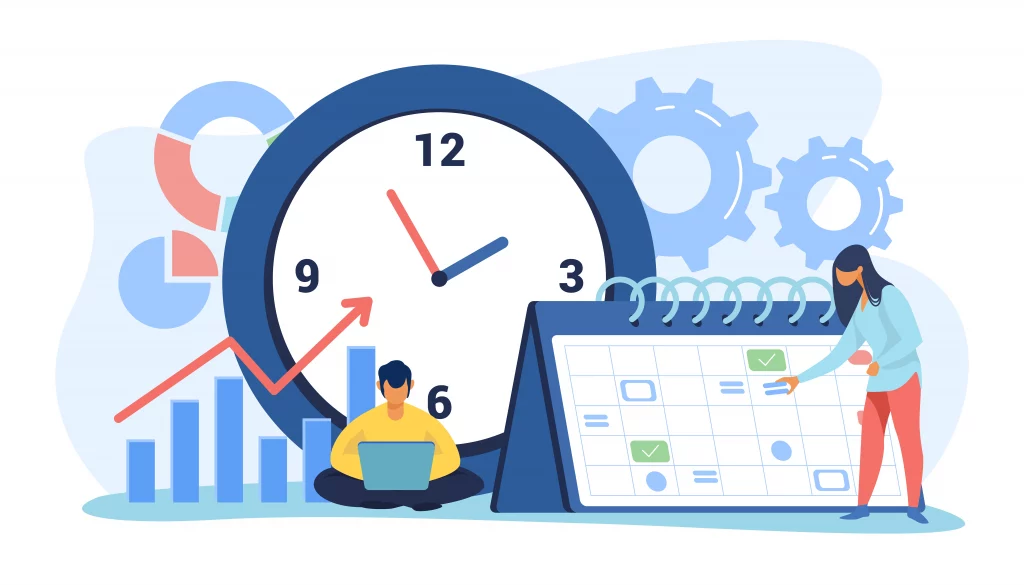TCE Planning : Mastering Planning from Planning Conception to Site Reality
Planning is the backbone of any construction project, whether TCE or not. It requires careful coordination of many elements to ensure that the project runs smoothly, on time, on budget, and to specification.
We’ll be taking an in-depth look at the key steps involved in drawing up a solid TCE schedule, focusing on the associated tools, documents, and constraints.
TCE planning includes all the work required to complete a project, from foundation construction to finishing. To develop an effective schedule for a TCE project, it’s essential to understand all facets of the project as well as the resources available.
What are the differences between TCE planning and a construction site schedule?
Here are the differences between a TCE planning schedule and a BTP site planning schedule:
TCE planning :
-
TCE planning encompasses all the trades involved in construction, such as structure, electricity, plumbing, and carpentry.
-
It takes into account all stages of the project, from design to completion, including the supply of materials and the coordination of all parties involved.
-
It takes into account the specific constraints of each trade, such as manufacturing lead times for prefabricated elements and equipment installation times.
-
Close coordination between all the parties involved is essential to ensuring consistency and synchronization.
Construction site planning :
-
Site planning in the construction industry focuses on the construction activities taking place on site.
-
It covers all stages of the project, including site preparation, earthworks, foundation construction, wall erection, etc.
-
It takes into account site-specific constraints, such as weather conditions, access constraints, and available resources.
-
It often requires the coordination of several subcontractors and participants, such as site managers, architects, project managers, etc.
In short, the TCE planning covers all the trades and stages of the construction project, while the BTP site schedule focuses specifically on the work carried out on site.
Both types of planning require careful coordination and planning to ensure that the project runs smoothly.
Conditions for building a TCE planning

To build a TCE schedule, it is important to take the following elements into account:
Planning tools
We recommend the use of planning software such as Microsoft Project to create a TCE schedule. This software offers a user-friendly interface for entering task details, allocating resources, and adjusting schedules. What’s more, it allows you to anticipate any dependencies between different activities. Using this tool, project managers can adjust the schedule to take account of delays or unforeseen changes.
The speakers
It is essential to define the various players involved in the TCE project, such as architects, engineers, building contractors, suppliers, and others. Each player must be involved in the planning process and must provide information about the tasks they are responsible for.
Project objectives
It is essential to determine the objectives of the TCE project, such as deadlines, costs, quality, and safety. These objectives must be clearly defined and communicated to all those involved.
Essential contract documents in TCE planning

Contract documents are contracts that determine the obligations and responsibilities of each participant in the TCE project. They are used as a reference to establish the schedule, identifying the different stages of the project. It is crucial to examine them carefully in order to plan the work logically.
Typically, they include the following elements:
Project Requirements
The Project Requirements (or the specifications) set out the technical and functional specifications for the TCE project, detailing the work to be carried out, the materials to be used, and the standards to be met, among other things.
Plans
Plans cover different types of work to be carried out, such as architectural plans, structural plans, electrical plans, plumbing plans, and so on.
Materials used
The materials used must be specified in the contract documents, comply with current standards, and be adapted to the technical specifications of the TCE project.
Constraints in TCE Planning
The planning of a TCE project must take into account the various constraints that can have an impact on the project. It is essential to manage them carefully to ensure the project’s success.
Here are some examples of constraints to consider:
Time constraints
It’s crucial to keep to the TCE project deadlines, as any delay can lead to additional costs and disruption to the other stages of the project. It is therefore essential to determine the precise start and finish dates for each task, as well as the dependencies between them.
Logistics constraints
The management of resources, whether manpower, materials, or equipment, must be optimized to avoid bottlenecks and delays.
Safety constraints
Safety constraints must be taken into account when planning a TCE project. It is important to define the safety measures to be put in place to protect workers and others on the site.
Phasing
Dividing the project into distinct phases can help spread the workload and minimize disruption. Phasing constraints can include coordinating the various companies working on the site, managing interfaces between different trades, etc.
To conclude…
General contracting is a complex process that requires meticulous planning to ensure its success. This is an essential step in project management. To create an effective TCE schedule, it is necessary to use the right tools and to analyze market documents in depth. Rigorous management of constraints is also crucial. By following these key steps, project managers can overcome challenges and ensure the successful delivery of TC projects.
Need help managing your project? Let us solve your problems for you. Our claims management experts are ready to help. Contact us today for personalized support and a fast resolution.



